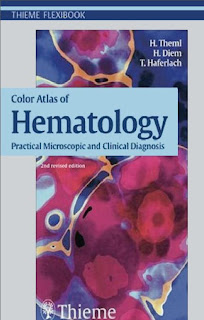Marks’ Basic Medical Biochemistry: A Clinical Approach, 2nd Edition
· Chapter 1: Metabolic Fuels and Dietary Components
· Chapter 2: The Fed or Absorptive State
· Chapter 3: Fasting
· Chapter 4: Water, Acids, Bases, and Buffers
· Chapter 5: Structures of the Major Compounds of the Body
· Chapter 6: Amino Acids in Proteins
· Chapter 7: Structure–Function Relationships in Proteins
· Chapter 8: Enzymes as Catalysts
· Chapter 9: Regulation of Enzymes
· Chapter 10: Relationship Between Cell Biology and Biochemistry
· Chapter 11: Cell Signaling by Chemical Messengers
· Chapter 12: Structure of the Nucleic Acids
· Chapter 13: Synthesis of DNA
· Chapter 14: Transcription: Synthesis of RNA
· Chapter 15: Translation: Synthesis of Proteins
· Chapter 16: Regulation of Gene Expression
· Chapter 17: Use of Recombinant DNA Techniques in Medicine
· Chapter 18: The Molecular Biology of Cancer
· Chapter 19: Cellular Bioenergetics: ATP And O2
· Chapter 20: Tricarboxylic Acid Cycle
· Chapter 21: Oxidative Phosphorylation and Mitochondrial Function
· Chapter 22: Generation of ATP from Glucose: Glycolysis
· Chapter 23: Oxidation of Fatty Acids and Ketone Bodies
· Chapter 24: Oxygen Toxicity and Free Radical Injury
· Chapter 25: Metabolism of Ethanol
· Chapter 26: Basic Concepts in the Regulation of Fuel Metabolism by Insulin, Glucagon, and Other
Hormones
· Chapter 27: Digestion, Absorption, and Transport of Carbohydrates
· Chapter 28: Formation and Degradation of Glycogen
· Chapter 29: Pathways of Sugar Metabolism: Pentose Phosphate Pathway, Fructose, and Galactose
Metabolism
· Chapter 30: Synthesis of Glycosides, Lactose, Glycoproteins and Glycolipids
· Chapter 31: Gluconeogenesis and Maintenance of Blood Glucose Levels
· Chapter 32: Digestion and Transport of Dietary Lipids
· Chapter 33: Synthesis of Fatty Acids, Triacylglycerols, and the Major Membrane Lipids
· Chapter 34: Cholesterol Absorption, Synthesis, Metabolism, and Fate
· Chapter 35: Metabolism of the Eicosanoids
· Chapter 36: Integration of Carbohydrate and Lipid Metabolism
· Chapter 37: Protein Digestion and Amino Acid Absorption
· Chapter 38: Fate of Amino Acid Nitrogen: Urea Cycle
· Chapter 39: Synthesis and Degradation of Amino Acids
· Chapter 40: Tetrahydrofolate, Vitamin B12, And S-Adenosylmethionine
· Chapter 41: Purine and Pyrimidine Metabolism
· Chapter 42: Intertissue Relationships in the Metabolism of Amino Acids
· Chapter 43: Actions of Hormones That Regulate Fuel Metabolism
· Chapter 44: The Biochemistry of the Erythrocyte and other Blood Cells
· Chapter 45: Blood Plasma Proteins, Coagulation and Fibrinolysis
· Chapter 46: Liver Metabolism
· Chapter 47: Metabolism of Muscle at Rest and During Exercise
· Chapter 48: Metabolism of the Nervous System
· Chapter 49: The Extracellular Matrix and Connective Tissue
 ']]}
']]}
 ']]}
']]}





















